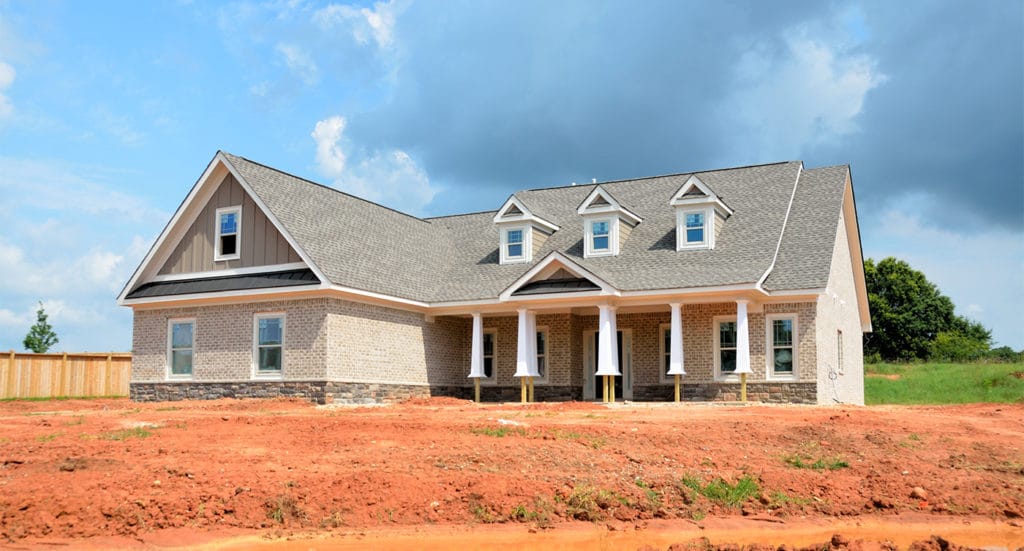Here’s the Scoop on the 2018 North Carolina Energy Conservation Code
- Last Updated Oct. 24, 2023
- 6 Minute Read
Originally Published September 25, 2018

Originally Published September 25, 2018

Hopefully by now you’re all aware that NC adopted a new building code on January 1st, 2019. As your energy experts, we’ve highlighted the top 5 most notable changes you’ll want to pay attention to in the 2018 NCECC:
A long standing best practice is now explicitly called out as a requirement:
“For air-permeable insulation in vented attics, a baffle shall be installed adjacent to soffit vents. The baffle shall extend over the top of the attic insulation. The baffle shall be permitted to be any solid material.”

There are minimal changes to all zones but most notable climate zone 3 will be required to have R-38 ceiling insulation and R-15 or R-13+2.5 wall insulation.
| Climate Zone | Fenestration U-Factor | Skylight U-Factor | Glazed Fenestration SHGC | Ceiling R-Value | Wood Frame Wall R-Value | Mass Wall R-Value | Floor R-Value | Basement Wall R-Value | Slab R-Value & Depth | Crawl Space Wall R-Value |
|---|---|---|---|---|---|---|---|---|---|---|
| 3 | 0.35 | 0.55 | 0.30 | 38 or 30ci | 15 or 13+2.5 | 5/13 or 5/10ci | 19 | 5/13 | 0 | 5/13 |
| 4 | 0.35 | 0.55 | 0.30 | 38 or 30ci | 15 or 13+2.5 | 5/13 or 5/10ci | 19 | 10/15 | 10 | 10/15 |
| 5 | 0.35 | 0.55 | NR | 38 or 30ci | 19 or 13+5 or 15+3 | 13/17 or 13/12.5ci | 30 | 10/15 | 10 | 10/19 |
Seams and joints of exterior house wrap and knee wall backing will be required to be sealed per the manufacturer’s instructions.
“Exterior house wrap material joints and seams are required to be sealed per the manufacturer’s instructions or, if house wrap joints are not sealed, seal exterior sheathing and exposed band joist joints including perimeter joints and edges of these materials.
“… Joints shall be air sealed”

Duct leakage testing is still a mandatory item under the 2018 NCECC and the benchmark targets have moved to 5% total or 4% leakage to outside. The previous target had been set at 6% total.
“Duct testing and duct leakage shall be verified by compliance with either section R403.3.3.1 (Total duct leakage shall be less than or equal to 5 cfm per 100 square feet) or R403.3.3.2 (Leakage to the outside shall be less than or equal to 4cfm per 100 square feet).”
“Duct systems serving areas of 750 square feet or less shall not need to be required to be leak tested”

The 2018 NCECC will now allow an Energy Rating Index (ERI) as a compliance pathway.
Check out our quick guide to Energy Code Compliance Pathways here →
Read more about the ERI and how it may be a valuable tool for you here →

This is only an abbreviated list of the most impactful changes. You can download a copy of the entire NCECC via the IECC website (Be sure to select 2018 under the “current adaptations” tab in the top left corner). Schedule a call or fill out a form below to let us know if you still have questions, we’re happy to help!
Schedule a meeting to review your home performance goals and challenges.
North Carolina’s solar power and building performance expert. Founded in 2001, we’ve worked for 20+ years to improve the way people make and use energy.